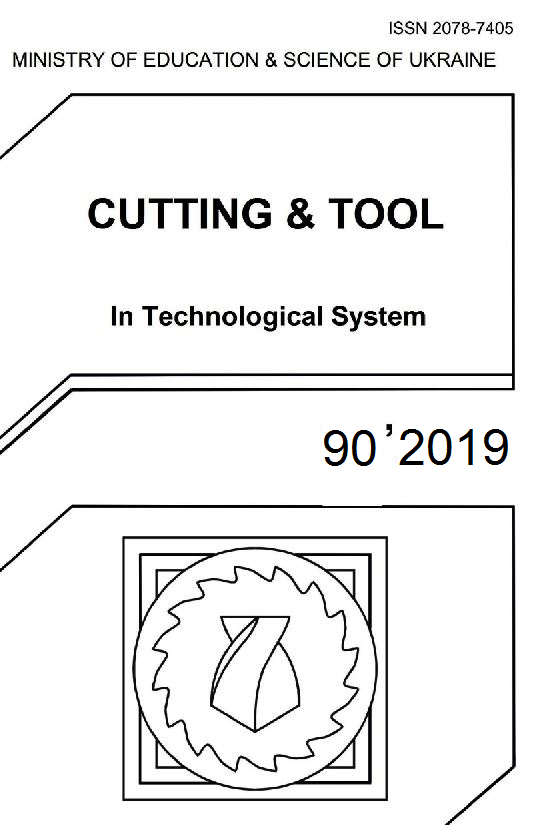THEORETICAL DETERMINATION OF REMOVED LAYER DEPTH AT ABRASIVE WATERJET TURNING
DOI:
https://doi.org/10.20998/2078-7405.2019.90.03Keywords:
waterjet turning, abrasive waterjet, theoretical model, geometrical characteristics, removed layer, depth of cut.Abstract
Abrasive waterjet turning is new technology to machine cylindrical or axisymmetric parts from hard to machine materials. One of the problems of waterjet turning is that the real depth of cut usually is not equal with the adjusted radial depth of cut. Aim of the paper is to develop a mathematical method for determining the real depth of turning. This method is based on the equality of effecting time of the jet at turning and simple kerfing test accomplished by abrasive waterjet.References
Manu R - Babu NR: An erosion-based model for abrasive waterjet turning of ductile materials. Wear., 2009; 266: 1091-7.
Axinte DA - Stepanian JP - Kong MC - McGourlay J: Abrasive waterjet turning – An efficient method to profile and dress grinding wheels. International Journal of MachineTools & Manufacture. 2009; 49: 351-6.
Kovacevic R - Hashish M - Mohan R - Ramulu M - Kim TJ - Geskin ES: State of the art of research and development in abrasive waterjet machining. ASME Journal of manufacturing Science and Engineering. 1997; 119: 776-85.
Mazurkiewicz M: A manufacturing tool for a new century. Journal of Materials Processing Technology. 2000; 106: 112-8.
Finnie, I.: The Mechanism of Erosion of Ductile Metals, Proceedings of 3th US Nat. Congress Applied Mechanics, ASME New York 1958, pp527-532
Buijs, M.: Erosion of Glass as Modeled by Indentation Theory, Journal of American Ceramic Society 77, 1994, pp1676-1678
Brandt, S. - Maros, Zs. - Monno, M.: AWJ Parameters Selection - a Technical and Economical Evaluat 8 ion, 15th International Conference on Jetting Technology, Ronneby, Sweden, 6-8 September 2000., pp353-366
Zohoor M – Zohourkari I – Cacciatore F – Annoni M: Influence of machining parameters on part geometrical error in abrasive waterjet offset-mode turning, Proceedings of the Institution of Mechanical Engineers, Part B: Journal of Engineering Manufacture, 2014 Volume: 229 issue: 12, pp 2125-2133.
Downloads
Published
Issue
Section
License
Copyright Notice
Authors who publish with this Collection agree to the following terms:
1. Authors retain copyright and grant the Collection right of first publication with the work simultaneously licensed under a Creative Commons Attribution License that allows others to share the work with an acknowledgement of the work's authorship and initial publication in this Collection.
2. Authors are able to enter into separate, additional contractual arrangements for the non-exclusive distribution of the Collection's published version of the work (e.g., post it to an institutional repository or publish it in a book), with an acknowledgement of its initial publication in this Collection.
3. Authors are permitted and encouraged to post their work online (e.g., in institutional repositories or on their website) prior to and during the submission process, as it can lead to productive exchanges, as well as earlier and greater citation of published work.

